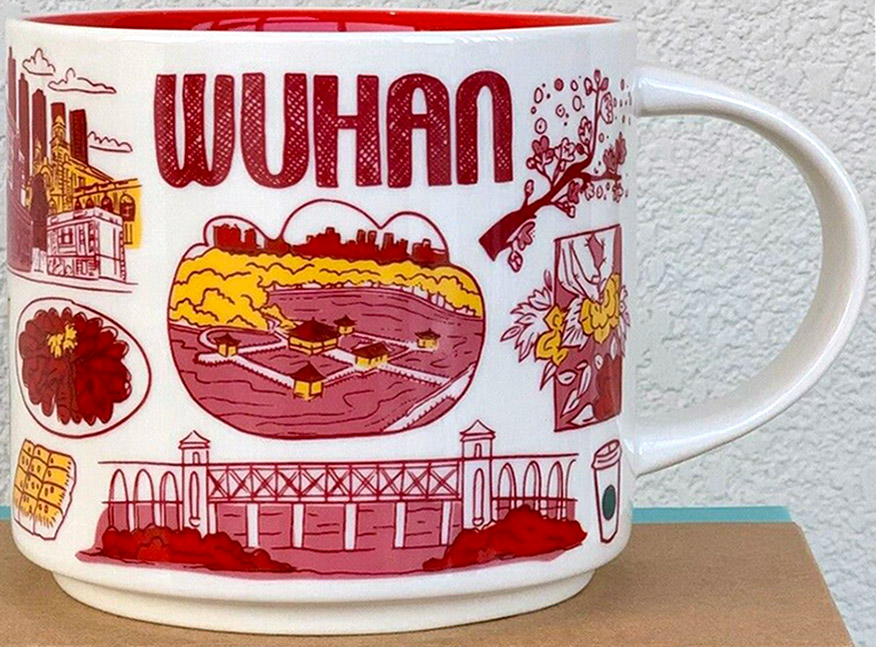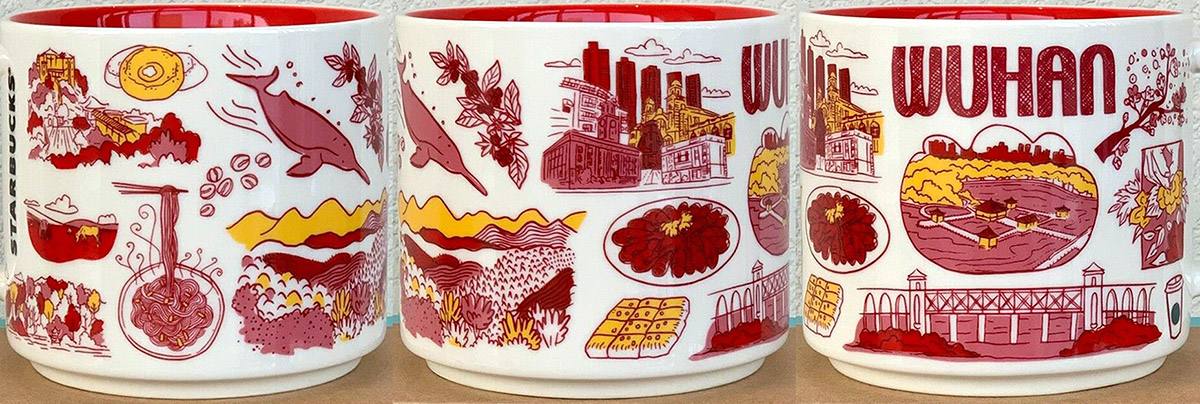
Been There – Wuhan
Been There – Wuhan is a mug for the capital of Hubei province in central China, with a history dating back over 3,500 years. Originally a series of three towns—Wuchang, Hankou, and Hanyang—it became a pivotal site for trade and transportation due to its strategic location at the confluence of the Yangtze and Han rivers. Throughout Chinese history, Wuhan has been a center of political and military significance, notably during the 1911 Wuchang Uprising, which played a crucial role in the downfall of the Qing Dynasty and the establishment of the Republic of China. The city has also been a focal point for cultural and intellectual movements, hosting key educational institutions and fostering influential figures in Chinese literature and politics. Modern Wuhan emerged as a major industrial and commercial hub, reflecting its historical importance as a nexus of economic and cultural exchange.
Here are some symbols and landmarks from the design of the Been There Wuhan mug:
– East Lake (on the front of the mug), is the largest urban lake in China, and a cherished landmark in Wuhan, offering a serene escape from the bustling city. The lake covers an area of 33 square kilometers and features scenic landscapes, botanical gardens, and numerous recreational activities. It symbolizes Wuhan’s natural beauty and commitment to preserving green spaces amidst rapid urban development.
– The Wuhan Yangtze River Bridge, often referred to as the “First Bridge of the Yangtze,” connects the city districts of Wuchang and Hanyang. Completed in 1957, it was the first bridge to span the Yangtze River, symbolizing the unity and modernization of China. The bridge is a crucial transportation link and a testament to Wuhan’s strategic and economic importance.
– Yellow Crane Tower, perched on Snake Hill, is one of China’s Four Great Towers and a symbol of Wuhan’s historical significance. The tower, originally built in AD 223, has been destroyed and rebuilt multiple times, with its current incarnation dating back to 1981. Its stunning architecture and panoramic views of the Yangtze River make it a must-visit landmark.
Here are some dishes from the local cuisine that you should try when in Wuhan:
– Hot Dry Noodles, or Reganmian, is a beloved breakfast staple in Wuhan, characterized by its chewy texture and savory sesame paste sauce. The noodles are typically served with pickled vegetables, chopped scallions, and sometimes a splash of chili oil for an extra kick. This dish is not only a local favorite but also a symbol of Wuhan’s vibrant street food culture.
– Doupi is a traditional Wuhan breakfast dish, often referred to as “the King of Breakfast” by locals. It consists of a large, thin soybean pancake filled with sticky rice, egg, shredded pork, tofu, mushrooms, bamboo shoots, and sometimes shrimp, which is then fried until crispy on both sides. This hearty and flavorful dish is a must-try for anyone visiting Wuhan









































































